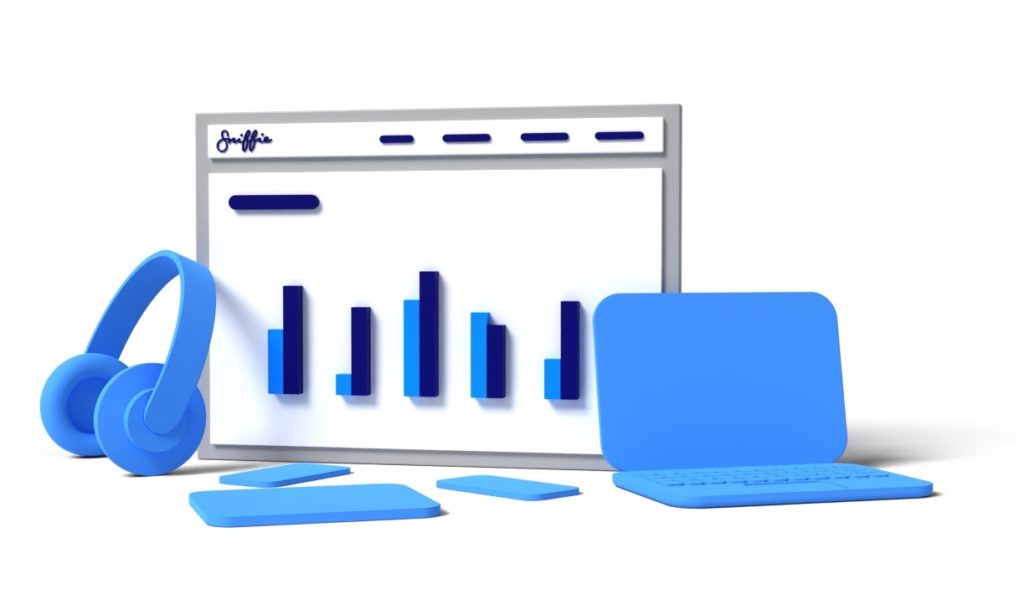Setting clear and well defined targets for your discount campaign is one of the most essential steps in your planning process. Launching a campaign with no clear target in sight will have you flying blind with no way to track your campaign progress or motivate your team. In other words, without clear set targets you will have no way to measure the success of a campaign.
This article is intended to give you a solid foundation to stand on when considering targets for your own discount campaigns. First, we will cover the importance of defining clear targets for the overall success of a campaign. Then, to start you on the right path, we will have a look at three different metrics by which you can set campaign targets and track your success as you go!
Table of Contents
Try it yourself - compare your campaign scenarios!

The importance of setting discount campaign targets
Setting targets for a discount campaign is important for several reasons. First and foremost, by setting targets you can measure the success of your discount campaign. Having a defined, measurable target for success is how you will know whether the campaign was effective in achieving the desired results or not.
Targets also help you and your team to focus your efforts and resources towards achieving your specific goals. A clear focus is especially important when you have limited resources and need to prioritize your activities and create a sense of urgency around the campaign. Working towards a clear goal is always an effective way to encourage your team to work harder and achieve the desired outcome.
Think about your overall goal and how to get there. Break that journey into steps and then set specific targets for different team members, by which they can complete each step. This creates a sense of accountability for the campaign overall, and holds individuals responsible for achieving their own goals.
Finally, clearly defined targets give you a point by which you can benchmark a campaign’s overall performance against previous campaigns. You can also benchmark the performance of various different elements to a campaign such as marketing, pricing, or product performance. Measuring the performance of each different area separately allows you to identify areas in need of future improvement.
Measuring success in relation to targets
To measure a campaign’s success in relation to its targets we can utilize key performance indicators (KPIs). Individually, KPIs can only tell you how the area they measure has performed. This information is good to know, but it does not allow you to understand the campaign as a whole. The more performance metrics you track, the richer your data set will be.
The richer your body of data, the better you can analyze campaign performance. Determining which KPIs will be most beneficial for your campaign success depends largely on the goals which you plan your campaign around. However, there are some commonly utilized KPIs which are beneficial in every campaign scenario, such as:
- Cost equalization (break even point)
- Return on investment
- Participation rate
Metrics such as cost equalization, return on investment and participation rate can be used for campaign outcome analysis. But once you have compiled a complete data set after the conclusion of a discount camping, they also provide a good foundation to build your campaign targets from. Let’s take a look at these three specific KPIs.
Cost Equalization
Cost equalization is the point where the cost and profit are equal. This is commonly known as the break even point. It is a crucial metric which needs to be calculated for every discount campaign, regardless of other performance indicators. Failing to determine the break even point can leave a discount campaign directionless.
To ensure a well-planned and thorough campaign, it is essential to estimate the total cost of the campaign before taking any action. As such, cost equalization should be set as the primary, minimum target for all discount campaigns.
Why should this be the absolute minimum target? Because, failing to reach cost equalization means a loss of revenue and a decrease in overall profits. Neither of which are the goal of any campaign, nor are they good for your business goals overall.
Calculating cost equalization is easy! To do so just divide the total campaign cost by the per product margin. At the point where the quotient equals zero you have cost equalization.
Total cost ÷ per product margin = 0
Total campaign cost = sum total cost campaign
Per product margin = total cost of product subtracted from the price product is sold for
Cost Equalization means your minimum target is no profit, no loss.
Return on Investment
One of the most commonly used metrics in all areas of business is the return on investment. In the context of a discount campaign this metric provides a general statement on the success of the campaign overall. To calculate the return generated by a discount campaign you take the sum total of the money earned through the campaign, and subtract the total campaign cost from that number. That sum is then divided by the total cost of the campaign to give you the return percentage.
The formula looks like this: ((X – Y) ÷ Y)) x 100 = return %
X = gross campaign sales
Y = total campaign cost
To illustrate this with an example let’s imagine a business ran a discount campaign at a total cost of 2 000 €. The total earnings of the campaign at its conclusion were 5 000 €.
To calculate the return generated by our 2 000 € investment we would use the following formula: ((5 000 – 2 000) ÷ 2 000) x 100 = 150%.
The minimum target for this metric is equal to the sum total investment sunk into the implementation of a discount campaign. For the above example, the minimum target we want to hit is 2 000 €. As the campaign exceeded our target by 150% we can say that the campaign was profitable, and so it was successful.
Participation Rate
Participation rate refers to the number of customers who made a purchase after engaging with the marketing campaign, and it provides valuable insights into the effectiveness of your discounting strategy. By setting and monitoring participation rate targets, you can refine your marketing strategy and make necessary adjustments to future campaigns.
Since discount campaigns bring pricing and marketing together, we can borrow some formulas commonly used in marketing to help us define campaign targets. The formula for calculating participation rate is the same as the one used by marketing teams to calculate conversion rates.
The formula to calculate participation rate looks like this: (X ÷ Y) x 100 = Rp
X = number purchases generated by the campaign
Y= number of engagements with campaign marketing materials
RP = rate of participation
Keep this formula in mind when planning your marketing strategy. You can aim at a perfect target, such as a 100% rate of participation. But perfect targets are hard to achieve in an imperfect world. Therefore it is better to first have an understanding of your historical marketing data to determine the reach necessary. For a more in depth discussion on setting campaign targets, and detailed example calculation of participation rates make sure you check out Sniffie’s free Pricing Academy course on Discount Campaigns!
Conclusion
Establishing clear and well-defined targets for your discount campaign is a critical step in the planning process. Set clear targets and share them with your team to focus individual efforts and give your campaign a sense of direction! Once you launch your campaign your targets will help you monitor your progress and keep team members motivated.
When setting campaign targets it is important to understand how you will track your progress towards reaching those targets. Key performance indicators (KPIs) can be used to gauge a campaign’s success in relation to its targets. Make sure you choose KPIs which work together to give you a deeper understanding of the campaign overall. Learn more about discount campaign pricing by registering for Sniffie’s free Pricing Academy course on Discount Campaigns.


